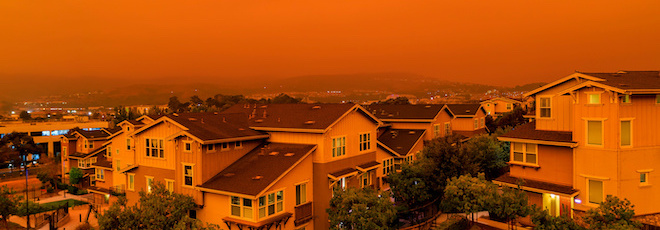

The Canadian wildfires that blanketed New York City in smoke last month serve as a reminder that even if you live outside wildfire-prone areas, air quality and your health can be affected.
Here are nine tips to protect yourself during future wildfires and improve indoor air quality.
1. Air quality report card. Get a sense of the overall health of the air by reading "State of the Air," the American Lung Association's annual national air quality (https://www.lung.org/research/sota) "report card." It grades cities and counties based on their scores for ozone, year-round particle pollution, and short-term particle pollution levels. One takeaway: nearly 36% of Americans—119.6 million people—live in places that get failing grades and feature unhealthy ozone or particle pollution levels.
2. Keep an eye on air quality. Visit AirNow.Gov to check the air quality and forecasts where you live. Also, the Fire and Smoke Map https://fire.airnow.gov/ shows where fires are burning and their impact on air quality.
3. Check with your doctor. Older adults, especially those with heart and lung issues, are more susceptible to the effects of wildfire pollutants, so ask your doctor if you should take special precautions when air quality is poor.
4. Stay inside. Unless you must go out, it's better to stay indoors. If you do go outside, consider wearing an N-95 respirator. See: https://www.airnow.gov/sites/default/files/2020-10/respiratory-protection-no-niosh_0.pdf
5. Keep smoke out. Close your windows and doors. Fine particles from wildfire smoke can get in through kitchen and bathroom vents, joints, cracks, and around windows and other openings in your house. Also, if your HVAC system has a fresh air intake, switch to the recirculate mode or close the outdoor intake damper.
6. Create a clean room. Create a room where you can go to reduce your exposure to wildfire pollutants. For tips, see https://www.airnow.gov/sites/default/files/2022-02/how-to-create-a-clean-room-at-home.pdf and https://www.lung.org/blog/wildfire-clean-room-diy, and https://www.youtube.com/watch?v=V8DqzogXcVg&feature=youtu.be
7. Avoid creating more fine particles indoors.
Don't:
- Smoke cigarettes.
- Use gas, propane, or wood-burning stoves and furnaces.
- Spray aerosol products.
- Fry or broil food.
- Burn candles or incense.
- Vacuum, unless you use a vacuum with a HEPA filter.
8. Use a portable air cleaner or high-efficiency filter. See https://www.airnow.gov/sites/default/files/2021-07/indoor-air-filtration-factsheet.pdf.
9. Protect Fido. Keep your pets indoors as much as possible, and keep outdoor bathroom breaks as short as possible. See https://www.airnow.gov/sites/default/files/2021-06/protect-your-pets-from-wildfire-smoke.pdf to learn how to